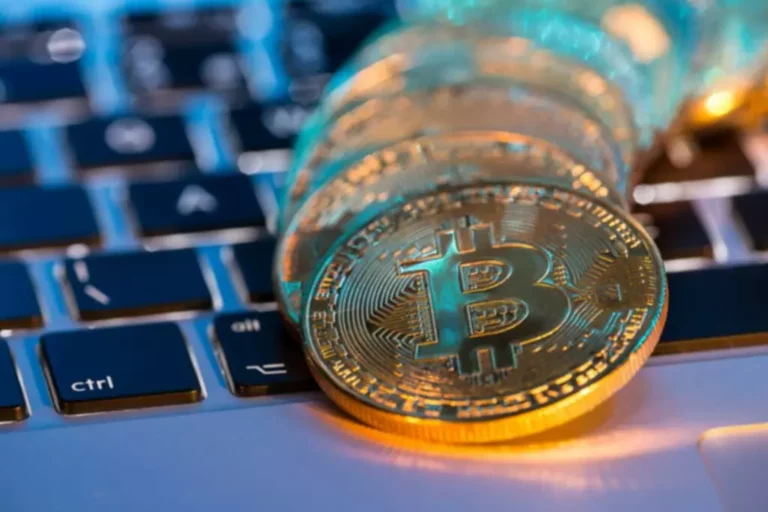Understanding the key gamers within the console wars is essential for buyers seeking to capitalize on the efficiency of gaming industry ETFs. Sony, Microsoft, Nintendo, Electronic Arts, and Take-Two Interactive are only a few examples of firms that may considerably influence the ETFs’ efficiency via their success within the console wars. By staying knowledgeable concerning the gaming methods and market reception of these key gamers, traders could make informed selections when deciding on ETFs with exposure to the gaming industry. If the basket has a higher weightage towards a specific asset class, the ETF’s performance might be influenced by that asset class’s performance. For example, if a bond ETF has a higher weightage in the direction of corporate bonds and the corporate bond market experiences a downturn, the ETF’s performance shall be negatively impacted. Conversely, if the company bond market experiences a boom, the ETF’s efficiency might be positively impacted.
Each metric provides a special perspective on liquidity, and considering them collectively helps form a comprehensive understanding. In the first market, a select group of market participants called licensed participants (APs) trade instantly with the ETFs, creating or redeeming ETF shares in change for cash or the underlying securities. In the secondary market, all different traders can trade ETF shares on exchanges or over-the-counter.
For instance, if the inventory market is experiencing a bear market, an ETF that tracks the S&P 500 is likely to expertise a decline in worth. On the other hand, if the market is experiencing a bull market, the ETF is likely to perform nicely. Factors similar to fund measurement, market making, fund sponsor popularity, and the expense ratio can affect an ETF’s liquidity profile. The wealthy information set permits https://www.xcritical.com/ us to run panel regressions on the underlying safety degree on a every day frequency, to evaluate the consequences of ETFs whereas controlling for a bunch of other components, together with security and time fixed results. We run the regressions for every underlying asset class separately, to grasp the differential impacts of ETFs on them.
Extra Proof That The Private Sector Is More Powerful Than The Federal Government
This implies that an investor seeking to avoid a selected company or business for a cause such as moral conflict does not have the identical level of management as an investor centered on particular person shares. Because totally different ETFs deal with capital gains distributions in varied ways, it may be a problem for traders to remain apprised of the funds in which they participate. It’s additionally crucial for an investor to study how an ETF treats capital positive aspects distributions before investing in that fund.

An ex-dividend date is the date on which a stock begins buying and selling with out the dividend. This signifies that traders who purchase the stock on or after the ex-dividend date won’t receive the upcoming dividend fee. In the context of ETFs, ex-dividend dates can have a big influence on the fund’s efficiency and yield. Supply and production dynamics also impression the Gold silver ratio and ETF efficiency. The availability of gold and silver available within the market impacts their respective prices and, consequently, the ratio. Gold is generally extra scarce and has a better production cost compared to silver.
When constructing an investment portfolio, it is necessary to think about the impression of danger. Consider a basketball staff, made up of key players like some extent guard, capturing guard, power ahead, small forward and heart. Similarly, an ETF is like a “team” made up of diversified “players” like stocks, bonds and commodities that tracks in opposition to the “goal” of matching its performance to an index, such as the S&P 500.
In the context of ETFs, liquidity plays a vital function in ensuring environment friendly buying and selling and minimizing transaction costs. In this part, we’ll delve into the importance of liquidity in ETFs and explore its implications for investors. Exchange-traded funds (ETFs) have skilled tremendous growth following the monetary crisis, with $7 trillion in property under management worldwide as of August 2020 (ETFGI 2020). A higher choice may %KEYWORD_VAR% be structuring a sequential group of extremely liquid ETFs that collectively provide the best attributes of laddered strategies while avoiding their complexity and low returns. Exchange-traded funds (ETFs) have traditionally provided advantages including transparency, low charges and tax efficiency. In 2022, ETF trading volume continued its nearly decade-long streak of regular growth—thanks partly to ETFs’ liquidity—with many ETFs acting as a relief valve for liquidity squeezes in underlying markets and securities.
Brendan Wooden Topgun Etf
This article develops a five-factor liquidity scoring algorithm that permits a rating of ETFs from essentially the most liquid to the least liquid. They also discover that there’s a very lively bond ETF market, as evidenced by the reality that about 20% of probably the most liquid ETFs are bond-based. The elements that the authors find most indicative of liquidity are a lower bid-ask spread, the next market capitalization, a lower expense ratio, and higher average buying and selling quantity. In contrast, the least liquid funds have larger bid-ask spreads, smaller market capitalizations, greater expense ratios, and much decrease investor interest as proxied by trailing 3-month day by day buying and selling volumes. Liquidity is among the most essential options of exchange-traded funds (ETFs), though regularly misunderstood.
Variations in firm payouts or economic situations can affect the fund’s yield, offering a tangible example of how exterior components influence ETF efficiency beyond basic price actions. One compelling instance is the tracking error exhibited by ETFs compared to their underlying indices. While the index soars, the ETF might lag because of components like fees, sampling methods, or timing discrepancies in portfolio rebalancing. Market makers revenue from the bid-ask spread and have incentives to maintain the unfold slender, benefiting both traders and themselves. The turnover fee of an ETF is one other necessary issue to think about when assessing its tax efficiency. ETFs with excessive turnover rates can generate more taxable occasions, corresponding to capital positive aspects and losses, which can cut back their tax effectivity.
Evaluating Etf Liquidity
Each of these gamers has a distinct role, and their collective actions contribute to the liquidity and general effectivity of the ETF market. Generally, ETFs that spend cash on large-cap, domestically traded firms are the most liquid, as these shares tend to be the most liquid. As a world funding manager and fiduciary to our shoppers, our function at BlackRock is to help everyone experience financial well-being.

Moreover, if an ETF invests in illiquid shares or makes use of leverage, the market price of the ETF may fall dramatically below the fund’s NAV. When buyers wish to sell their GreenTech ETF shares, a fluid redemption process supported by the liquidity of the underlying holdings helps be certain that the excess supply of ETF shares is effectively absorbed. The “secondary market” liquidity seen on exchanges is important for ETF buyers and merchants.
Low Trading Quantity Doesn’t Imply Low Liquidity
An ETF’s liquidity refers to how simply shares can be purchased and bought without impacting the ETF’s market price. An ETF’s liquidity is essential as a result of it impacts trading prices and helps determine how carefully the ETF’s worth tracks its underlying belongings. Minimizing the cash allocation in favor of asset classes with larger anticipated returns makes economic sense over the lengthy term.

From monitoring error to liquidity challenges and the affect of market sentiment, every side contributes to a complete understanding of how ETFs navigate the ever-evolving financial landscape. In abstract, Tracking Error is an important tool for buyers in assessing ETF performance. However, it’s essential to assume about monitoring error alongside different factors and to acknowledge that the next monitoring error is not always a negative sign, as it may be the end result of energetic management strategies. Careful analysis of monitoring error, combined with an understanding of the broader ETF landscape, can empower buyers to make extra informed decisions in their funding journeys. Biotech ETFs typically track an index or benchmark that represents a section of the biotech business, such as the Nasdaq Biotechnology Index, the S&P Biotechnology Select Industry Index, or the ICE Biotechnology Index. These indexes have completely different methodologies, criteria, and weightings for choosing and rebalancing their constituents, which may have an result on their risk-return profiles and diversification advantages.
However, doing so shifts the sources of liquidity elsewhere, often to asset courses which might be much less properly suited to the duty. These risks don’t apply solely to investors’ want for liquidity to settle exterior obligations; they also apply to inner liquidity necessities related to portfolio rebalancing and capital calls. Biotech ETFs can have different methods and exposures that reflect their funding goals and approaches. Some biotech ETFs could adopt a passive technique, which means that they simply replicate the holdings and efficiency of their underlying index without any lively intervention from the fund manager. Other biotech ETFs could adopt an lively strategy, meaning that they use research, evaluation, and discretion to decide out and regulate their holdings based on market circumstances and opportunities. An active technique may permit a biotech ETF to outperform its underlying index or peers, however it may also entail larger fees, dangers, and deviations.
- Ultimately, the ETF issuer ought to fastidiously think about the costs and benefits of each possibility and select the one that aligns with the ETF’s funding objective and investor preferences.
- Any examples used on this material are generic, hypothetical and for illustration purposes solely.
- FasterCapital will turn into the technical cofounder that will help you construct your MVP/prototype and provide full tech growth services.
- One of the key elements of exchange-traded funds (ETFs) is their tradeability, which refers back to the ease and efficiency with which they can be purchased and bought on the market.
- The size of an ETF measured by its assets beneath management (AUM) likewise doesn’t necessarily dictate its liquidity.
- These dangers don’t apply solely to investors’ need for liquidity to settle exterior obligations; additionally they apply to inner liquidity requirements related to portfolio rebalancing and capital calls.
Therefore, bond ETFs may have different returns and dangers than the underlying bonds or the benchmark index. Market measurement and buying and selling quantity, bid-ask spreads, buying and selling quantity and frequency, market maker participation, and tracking effectivity all play significant roles. It is essential for buyers to suppose about these factors when evaluating the liquidity of an ETF, as it could possibly have an result on their ability to enter or exit positions efficiently and at fair prices. The timing of the roll, the liquidity of the underlying securities, and the trading behavior of market participants are all factors that may have an effect on ETF efficiency. Investors ought to contemplate these factors when selecting ETFs and monitor them intently to ensure that their investments are performing as anticipated. For example, the SPDR S&P 500 ETF (SPY) was affected by the index roll in September 2018, which led to a brief monitoring error.

We work with you on content material advertising, social media presence, and help you find professional advertising consultants and canopy 50% of the costs. FasterCapital will turn out to be the technical cofounder that can help you build your MVP/prototype and provide full tech improvement services. A long-running debate in asset allocation circles is how much of a portfolio an investor ought to… Adam Hayes, Ph.D., CFA, is a financial writer with 15+ years Wall Street expertise as a derivatives trader.
By accessing the net site, you certify that you are a monetary middleman appearing as an agent on behalf of a non-U.S. Person, that you may be not looking for to buy an investment product for the account or benefit of a U.S. Person and that you just shall only distribute the supplies contained in this web site to non-U.S.